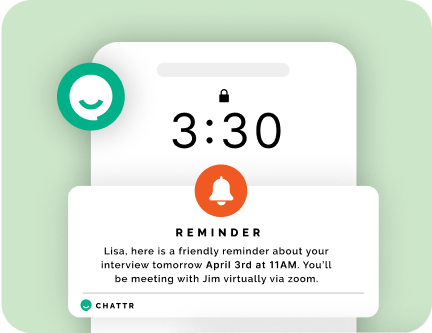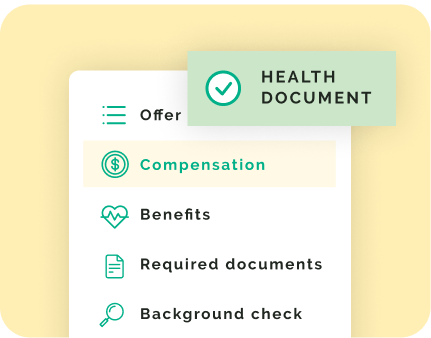Optimizing hourly hiring relies on data visibility. Follow these steps to identify key metrics, set ambitious goals, monitor analytics, course correct issues, and enable data-driven recruiting success.
Determine the Right Metrics to Track
Pinpoint the metrics providing the greatest visibility into hourly hiring effectiveness. Leading indicators recommended by recruiting experts include time-to-fill, cost-per-hire, source of hire, offer acceptance rate, and retention rate after 6-12 months.
Time-to-fill specifically measures the average number of days between posting a job requisition and the candidate accepting an offer. Cost-per-hire calculates the total expenses incurred per new hire, encompassing costs like job board posting fees, travel for interviews, supplies, and staff time invested.
Source of hire shows the hiring volume driven by each channel, such as job boards, employee referrals, or career fairs. The offer acceptance rate indicates the percentage of provided offers that candidates accept. Retention rate demonstrates how many new hires stay employed beyond the 6-12 month mark.
Set Clear Goals
With key metrics selected, set clear goals for improving each benchmark. Research typical ranges in your industry to identify realistic but ambitious targets.
Aim to trim time-to-fill by 10-20% annually or improve offer acceptance rates to 60-70% range or higher. Get buy-in from recruiters, hiring managers, and leadership by showing how metrics clearly link to broader organizational goals around productivity, profitability, and growth.
Share success stories demonstrating how other employers refined processes to reduce cost-per-hire by 15% or boosted applicant quality by 30%. Outline how hitting goals will positively impact the candidate’s experience. Celebrate incremental progress and milestone achievements along the path to ambitious long-term goals by calling out individual and team contributions.
Monitor Metrics Throughout the Hiring Funnel
Track metrics throughout your hiring funnel – during sourcing, screening, interviewing, and offer phases – to pinpoint where delays or fallout occur. Break down specific components causing lags, like scheduling setbacks or drawn-out assessments.
Identify stages where candidate drop-off is highest to address excessive requirements or process friction points. Evaluate the quality of applicants at each step, not just those eventually hired, to highlight holes producing unqualified prospects.
Build reporting dashboards and analytics capabilities, enabling recruiters and hiring managers to access data and self-serve insights. Provide visibility into hourly hiring metrics and trends by location, job type, experience level, and other relevant variables. Leverage recruiting systems with robust analytics functionality to visualize bottlenecks, inconsistencies, and opportunities right out of the box. Establish clear protocols for monitoring data, investigating patterns, and sharing key findings on a regular cadence.
Segment Data to Uncover Patterns and Trends
Divide data into meaningful segments to derive deeper insights into hourly hiring patterns. Filter metrics by location, department, or job type to spot variances. Look at results by experience level, as specialized roles often have longer sourcing cycles. Compare metrics across sourcing channels like job boards, social media campaigns, and university partnerships to find what works best.
Determine if new third-party sites underperform existing sourcing channels. Isolate data by individual recruiter or hiring manager to identify high and low performers. Conduct A/B testing with different job post language or screening criteria to see the impact on applications. Review metrics over years and quarters to detect positive or negative trajectories. Bring findings back to your goals – which segments show the most promise for driving improvements? Which demonstrate processes in need of refinement?
Course Correct Issues Impacting Metrics
Use segmented data insights to address areas negatively impacting recruiting metrics. Allocate additional headcount or staffing agencies to overloaded recruiters, causing delays. Streamline or automate manual steps, consuming excessive time. Boost investment in sourcing channels, producing high offer acceptance rates. Refine or pull underperforming job posts on channels with poor metrics.
Develop targeted recruiter training to improve areas like uncovering candidate motivations or writing compelling job posts. Provide hiring managers with coaching to enhance their interviewing approach and techniques.
Keep iterating based on the latest data until metrics consistently meet targets across segments. Bring in project management resources to lead large-scale process optimization initiatives identified through analytics. Update technologies and systems if current tools lack capabilities for thorough data capture, visibility, and reporting.
Revisit Goals and Recognize Wins
Revisit goals quarterly to reset targets as processes improve, and ambitions grow. With milestone objectives met, challenge teams by further raising targets for metrics like time-to-fill reductions or offer acceptance increases. Be transparent about goals with recruiting and hiring teams. Highlight positive examples where enhanced processes made a measurable difference.
Call out individual and team contributions publicly. Track compelling metrics-driven success stories to showcase progress. Use periodic surveys to identify what helped teams exceed expectations. Keep momentum going by demonstrating how metrics ultimately translate into superior applicant experiences, productive hires, and cost management over time. Celebrate wins frequently and with gusto to reinforce desired outcomes.
With clear metrics, goals, monitoring, and data-backed refinements, you gain unbiased visibility into hourly hiring effectiveness. Move from guesswork to fact-based, metrics-driven talent acquisition decision-making.












